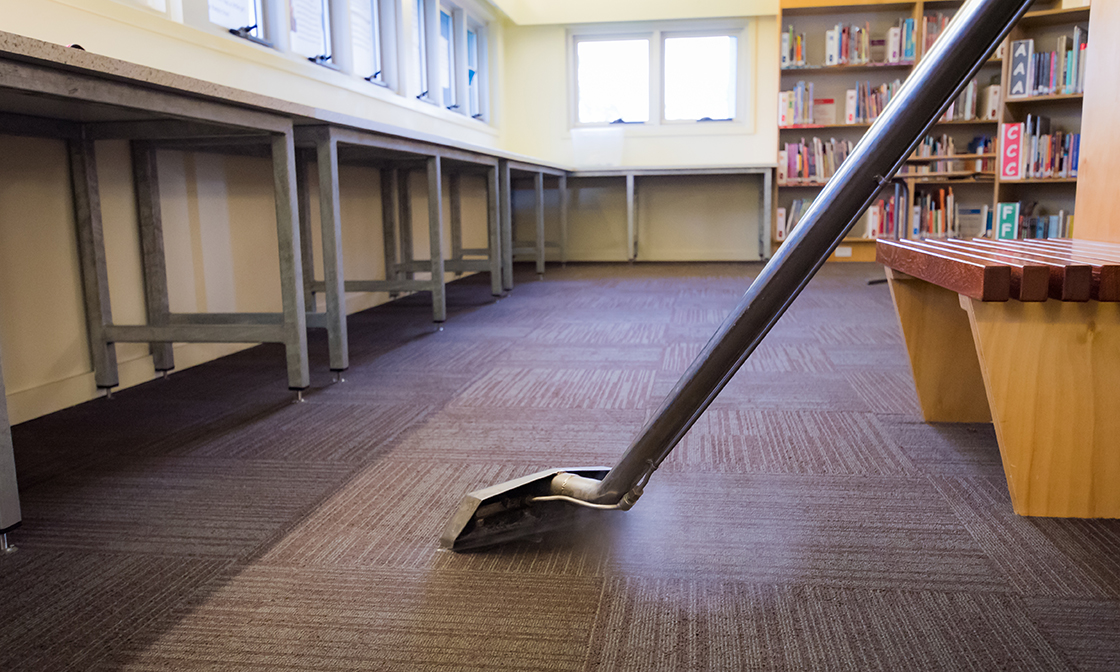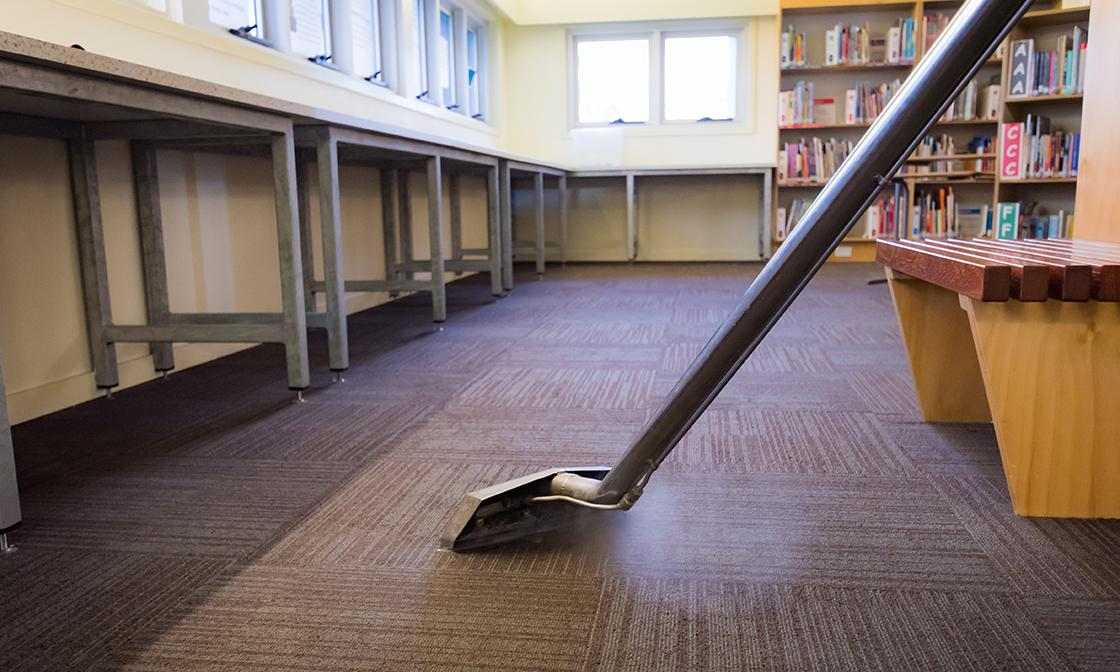Carpet has long been the go-to choice for school flooring in areas such as classrooms and libraries. Not only is it stylish, abundant and cost-effective, but carpet can help reduce energy consumption and is highly sound absorbent.
Unlike other floor surface options, carpet traps allergens, dust and other contaminants, holding them until they can be properly removed. According to the Institute of Inspection Cleaning and Restoration Certification (IICRC), it usually costs less over time to purchase, clean and maintain carpet compared to hard surface flooring.
Despite carpets’ minimal drawbacks, it is essential for facility managers in schools to properly invest in regular and thorough maintenance to prevent premature wear and tear.
Carpet Challenges
Carpet has proven to be a reliable and cost-effective option for flooring. Yet, there are challenges and issues to which carpet can be susceptible. For example, daily, heavy foot traffic, contact with sharp objects and heavy furniture and chairs can cause carpet to indent, fray and even rip in areas. Carpet is also highly susceptible to spills, water leaks or floods, which can accelerate the buildup of mold. As sections of damaged carpet cannot be replaced easily or in an aesthetic manner, an entire room typically must be replaced if damage or mold occurs.
Best Practices for Carpet Care
The following recommendations can help prolong the life of carpets:
- Daily dry vacuuming: This is an essential and low-impact step for effective dirt removal. Depending on the type of carpet, you may need to use a vacuum with a rotating brush, a beater bar or suction only.
- Encapsulation cleaning: This process is fast and effective. Use a low-moisture encapsulation product designed for use through a dry foam encapsulation machine to clean and dry carpets in thirty minutes. This extends the time and reduces the need for wet extraction cleaning.
- Use an extraction machine and cleaner: Specially-formulated extraction cleaners and machines designed for use in high-traffic education environments are an ideal solution for carpet upkeep, but, should be used only as needed to reduce the amount of water left in carpet.
- Use spotters to remove tough stains: When heavy set stains fight back, use an all-purpose, water-based spotter fortified with hydrogen peroxide. A low-residue formula will not re-soil carpet assets, ensuring maximum carpet longevity.
Contact our experts to learn how we can revitalize your carpet floors, or learn more on our Carpet Care page.


